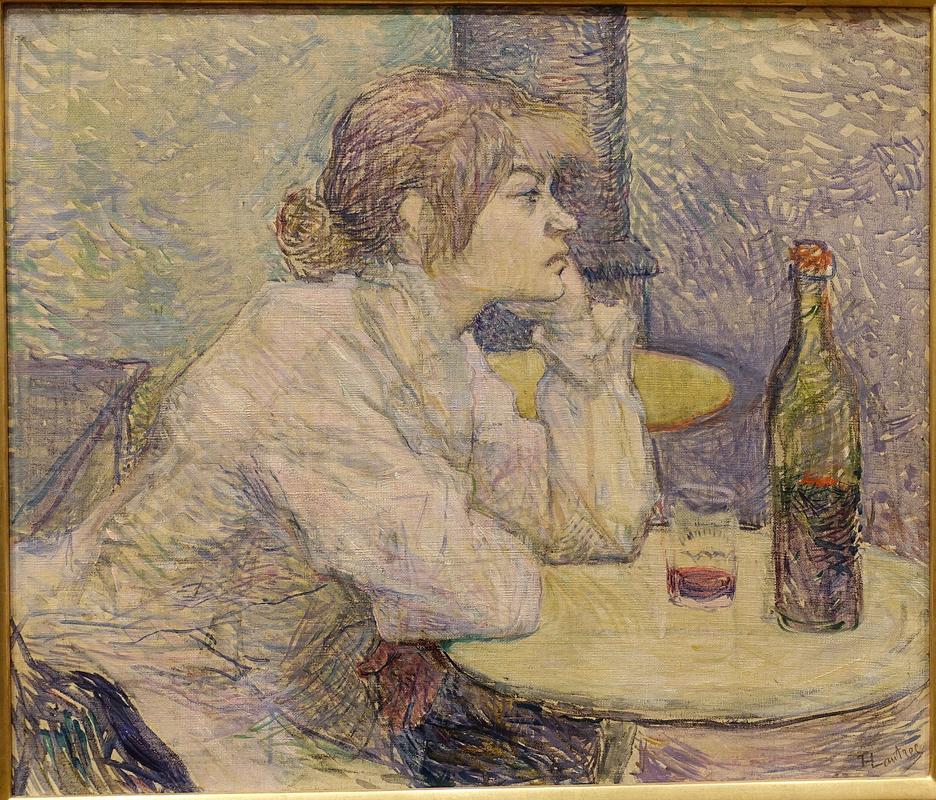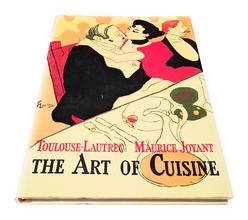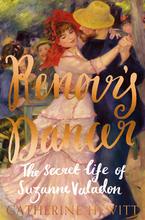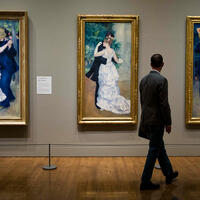More about The Hangover (Suzanne Valadon)
- All
- Info
- Shop

Contributor
Henri de Toulouse-Lautrec paints Suzanne Valadon as a one-woman wolfpack who could easily fit into The Hangover movie.
Suzie is obviously contemplating where the rest of the pack is and/or whether or not she is going to throw up. She's definitely not ready to let the dogs out.
The model for this painting is Suzanne Valadon, who got it on with famous artists all through the late 1800s. By the look on her face of severe regret that one can only have after a long night of bad decision-making, we know that Suzie here was a party girl and believed that wine is an appropriate beverage for anytime of the day, especially as a hangover cure in the wee hours of the morning. She eventually settled down though … with her son’s best friend … who was 21 years younger than her. Kudos to the original cougar.
The painting is Post-Impressionist, meaning that it is supposed to show us how Lautrec felt rather than showing us what was actually there. Based on his alcoholism and affinity for prostitutes, I’d say the painting sums it all up. We connect to the painting, though, because we have all been in Suzie’s shoes: hungover, having a little “hair of the dog” while trying to remember what it is you did the night before, ultimately coming to the conclusion that you shouldn’t be allowed to drink ever again and take a complete vow of sobriety ... at least until the next time you go bar hopping.
The painting shows us the less appealing and ever-so-slightly nauseated side of the super-cool, eccentric, bohemian lifestyle of Lautrec and Valadon during Paris' Belle Époque.
Featured Content
Here is what Wikipedia says about The Hangover (Suzanne Valadon)
The Hangover (Suzanne Valadon) (French: Gueule de Bois / La Buveuse), also known as The Drinker, is an oil on canvas painting by French post-Impressionist artist Henri de Toulouse-Lautrec, created from 1887 to 1889, just before he became successful as an artist. The painting depicts a drunken woman drinking alone in a club, reflecting the counterculture of Montmartre and the specter of alcoholism among French women at the time. The model in The Hangover is artist Suzanne Valadon, Lautrec's lover. In the early 1880s, after falling from a circus trapeze at the age of 15 and suffering a back injury, Valadon was forced to switch careers and began working as an art model in Montmartre. Although she had been drawing all her life, by 1883, she had become an artist herself, and she would go on to become the first woman painter admitted to the Société Nationale des Beaux-Arts.
French cabaret singer and nightclub owner Aristide Bruant is thought to have influenced both the content and the choice of title, although there is some disagreement about this. Lautrec's technique is loosely reminiscent of both the color theory of Neo-Impressionism and the technique of Lautrec's art school friend Vincent van Gogh. The work was preceded by a preparatory study for the painting in pastel and followed by a drawing in ink and chalk that was later published in Le Courrier français in 1889. Lautrec drank copious amounts of alcohol to deal with pain from his assumed underlying genetic disorder which left him disabled. This and the syphilis he later acquired due to his habit of frequenting brothels would later contribute to his death at the young age of 36. The work is held by the Fogg Museum, while the study and drawing are both held by the Musée Toulouse-Lautrec. The Hangover is one of several different works by Lautrec featuring Suzanne Valadon, most notably two portraits, Portrait of Suzanne Valadon (1885) in the Museo Nacional de Bellas Artes, and Portrait of the Painter Suzanne Valadon in the Ny Carlsberg Glyptotek.
Check out the full Wikipedia article about The Hangover (Suzanne Valadon)


















